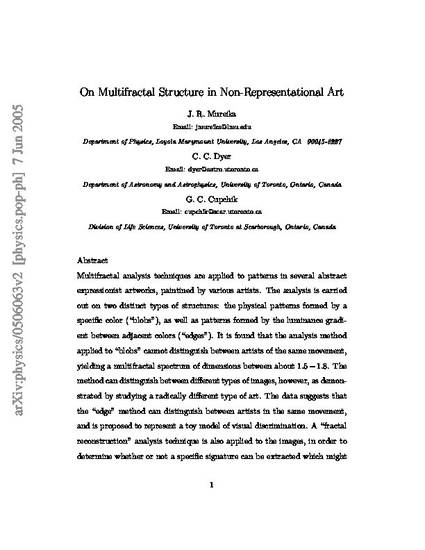
Article
Multifractal structure in nonrepresentational art
Physical Review E
Document Type
Article - post-print
Publication Date
10-1-2005
Disciplines
Abstract
Multifractal analysis techniques are applied to patterns in several abstract expressionist artworks, painted by various artists. The analysis is carried out on two distinct types of structures: the physical patterns formed by a specific color (“blobs”) and patterns formed by the luminance gradient between adjacent colors (“edges”). It is found that the multifractal analysis method applied to “blobs” cannot distinguish between artists of the same movement, yielding a multifractal spectrum of dimensions between about 1.5 and 1.8. The method can distinguish between different types of images, however, as demonstrated by studying a radically different type of art. The data suggest that the “edge” method can distinguish between artists in the same movement and is proposed to represent a toy model of visual discrimination. A “fractal reconstruction” analysis technique is also applied to the images in order to determine whether or not a specific signature can be extracted which might serve as a type of fingerprint for the movement.
Publisher Statement
This is an author-manuscript of an article accepted for publication in Physical Review E following peer review. The version of record is available online at: https://doi.org/10.1103/PhysRevE.72.046101.
Citation Information
Mureika, J. R., Dyer, C. C., and Cupchik, G. C., "Multifractal structure in nonrepresentational art," Phys. Rev. E 72, 046101 (2005). https://doi.org/10.1103/PhysRevE.72.046101.
